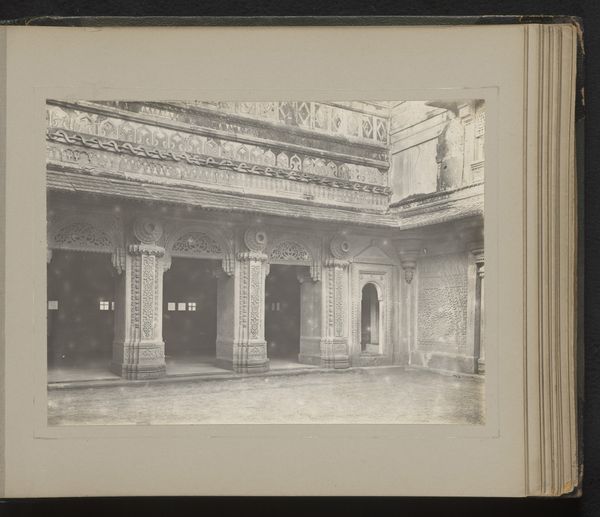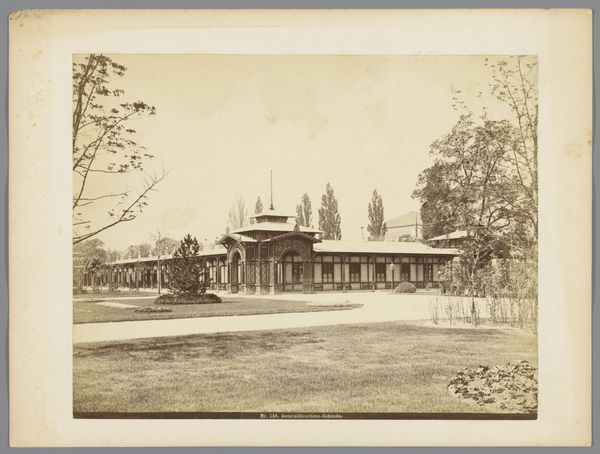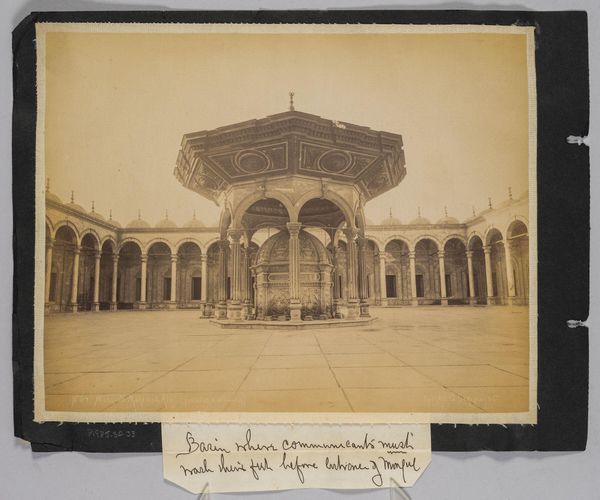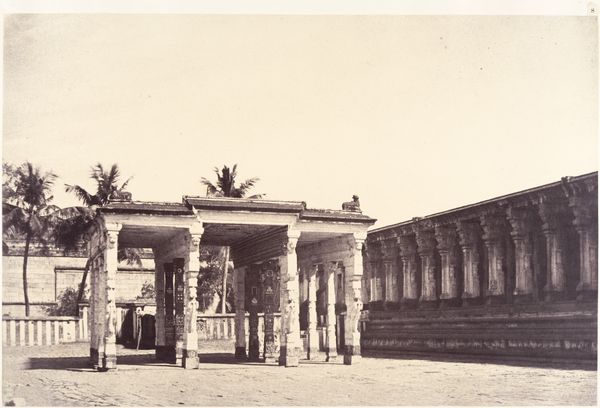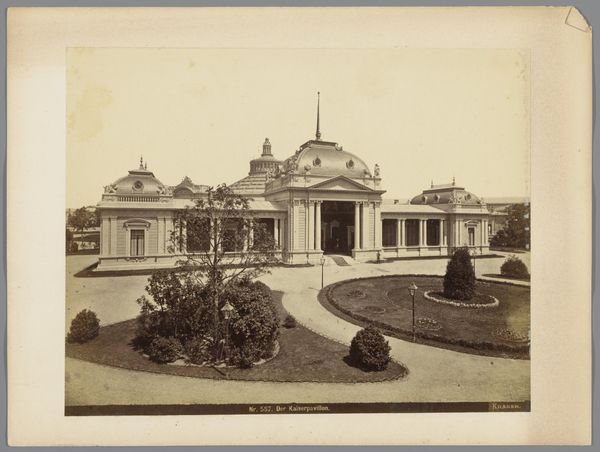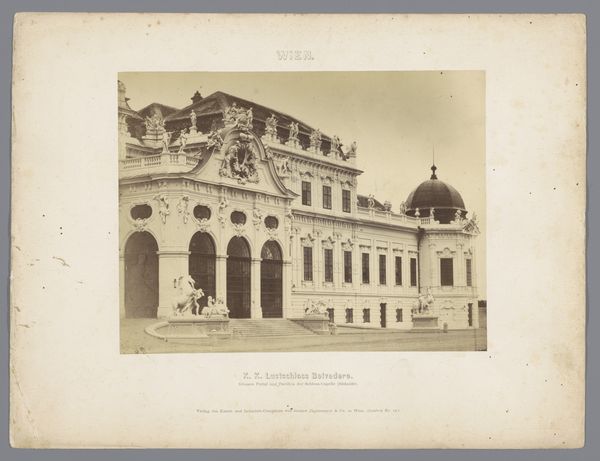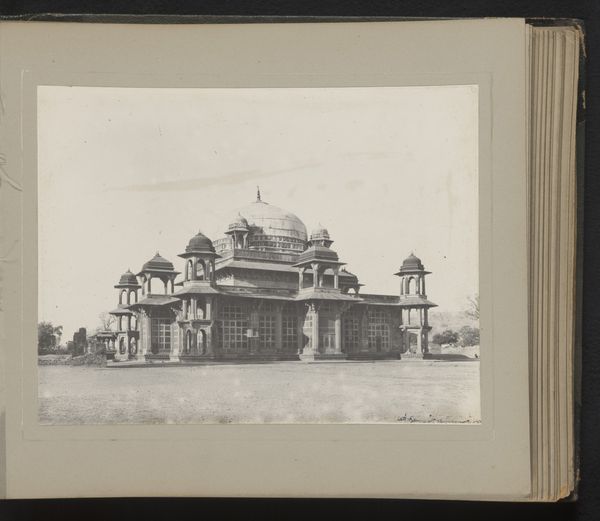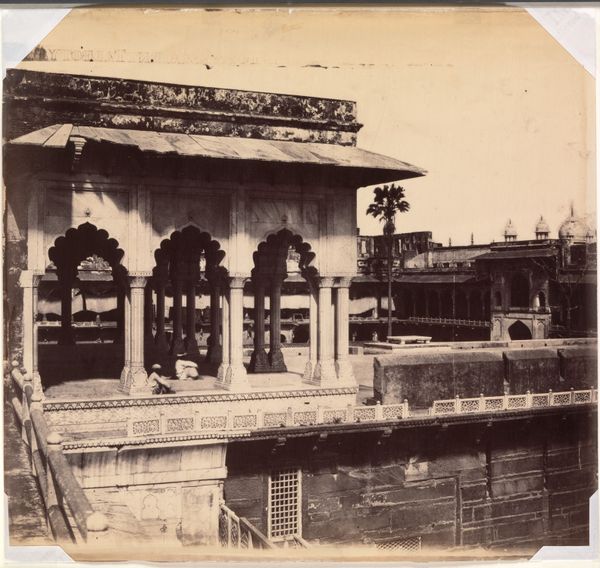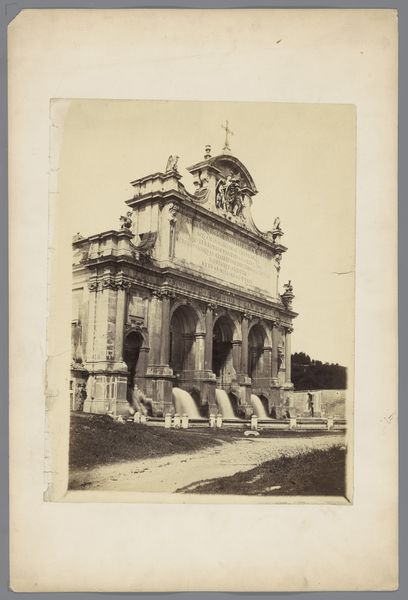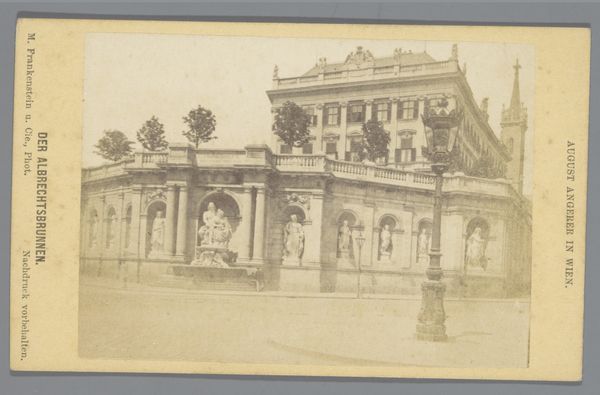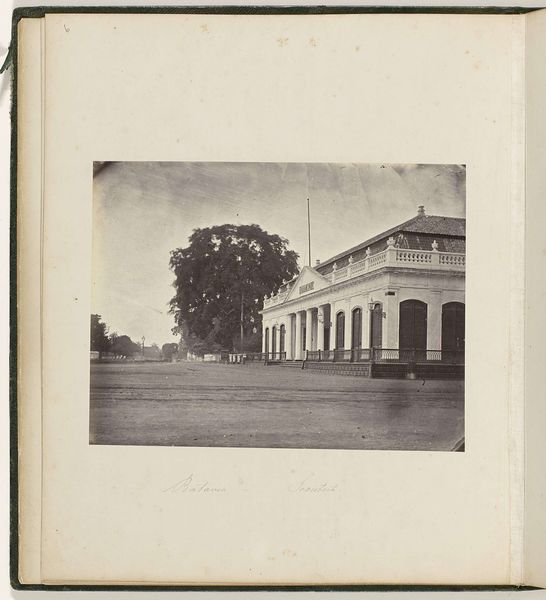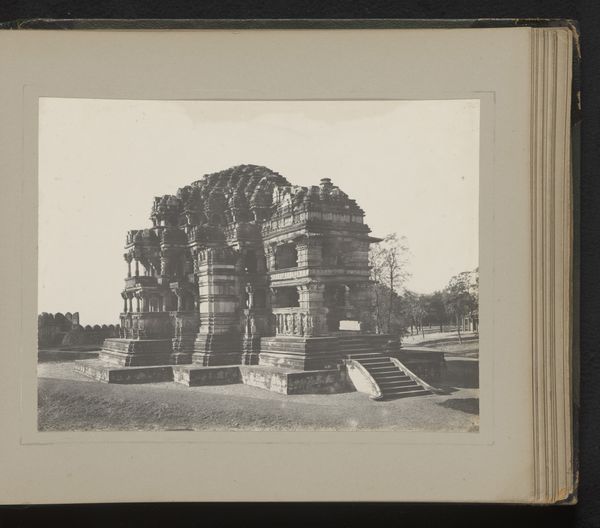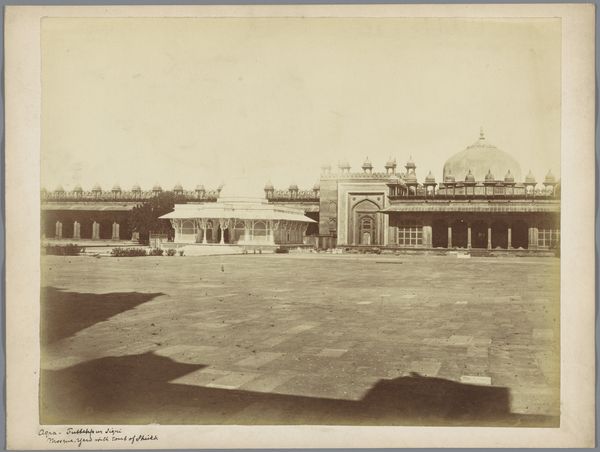
print, photography, architecture
# print
#
asian-art
#
landscape
#
photography
#
orientalism
#
architecture
Dimensions: height 215 mm, width 276 mm
Copyright: Rijks Museum: Open Domain
Curator: Welcome. Before us is a photographic print entitled "Boeddhistische tempel," created between 1892 and 1893 by A. Kaulfuss. Editor: It’s remarkably serene. The strong horizontal line of the temple roof contrasts beautifully with the verticality of the columns and the distant tower. There's something very still about the scene, despite the presence of foliage. Curator: Indeed. Works such as this contributed significantly to the Western world's fascination with so-called “Orientalism”. It presents a seemingly objective view, yet carries embedded perspectives on non-Western cultures. The role of photography, especially in the colonial context, becomes a vital consideration. Editor: I'm immediately drawn to the materiality evident even in the photograph: the rough texture of the tiled roof, the presumably hewn stone of those columns. You can almost feel the labor that went into constructing such a place of worship, the sheer human effort. Curator: Precisely, consider the cultural exchange and power dynamics at play here. How did Western artists and photographers perceive and present Asian architecture to audiences back home? It raises questions about authenticity, representation, and the construction of knowledge. Editor: Right. This is more than just documenting a building; it’s a study in labor, materials sourced, and the social implications of constructing a sacred space. Thinking of the skilled craftspeople behind it complicates any purely "picturesque" reading. Curator: Exactly. These photographs were often circulated and reproduced, contributing to broader cultural narratives. We can delve deeper into how the distribution and reception of images like this one helped shape European views and policies regarding Asia. Editor: Looking at the repetition of form, the way the columns march into the distance... I’m struck by a sort of industrialized approach to even something supposedly exotic. Was this image meant for a specific colonial function, and how does its current exhibition complicate its origins? Curator: An important point. The print allows us to contemplate the history of art's public role. And as we close, reflect on the ongoing dialogue between art, society, and the complex stories that artwork embodies. Editor: And I'd add that the photograph's existence also challenges the assumed hierarchies of artistic labor—demanding we ask, who built this and whose stories have been overlooked in dominant historical narratives?
Comments
No comments
Be the first to comment and join the conversation on the ultimate creative platform.

